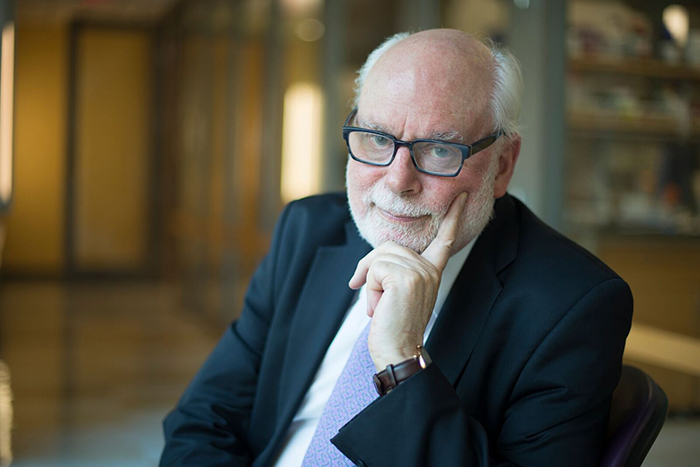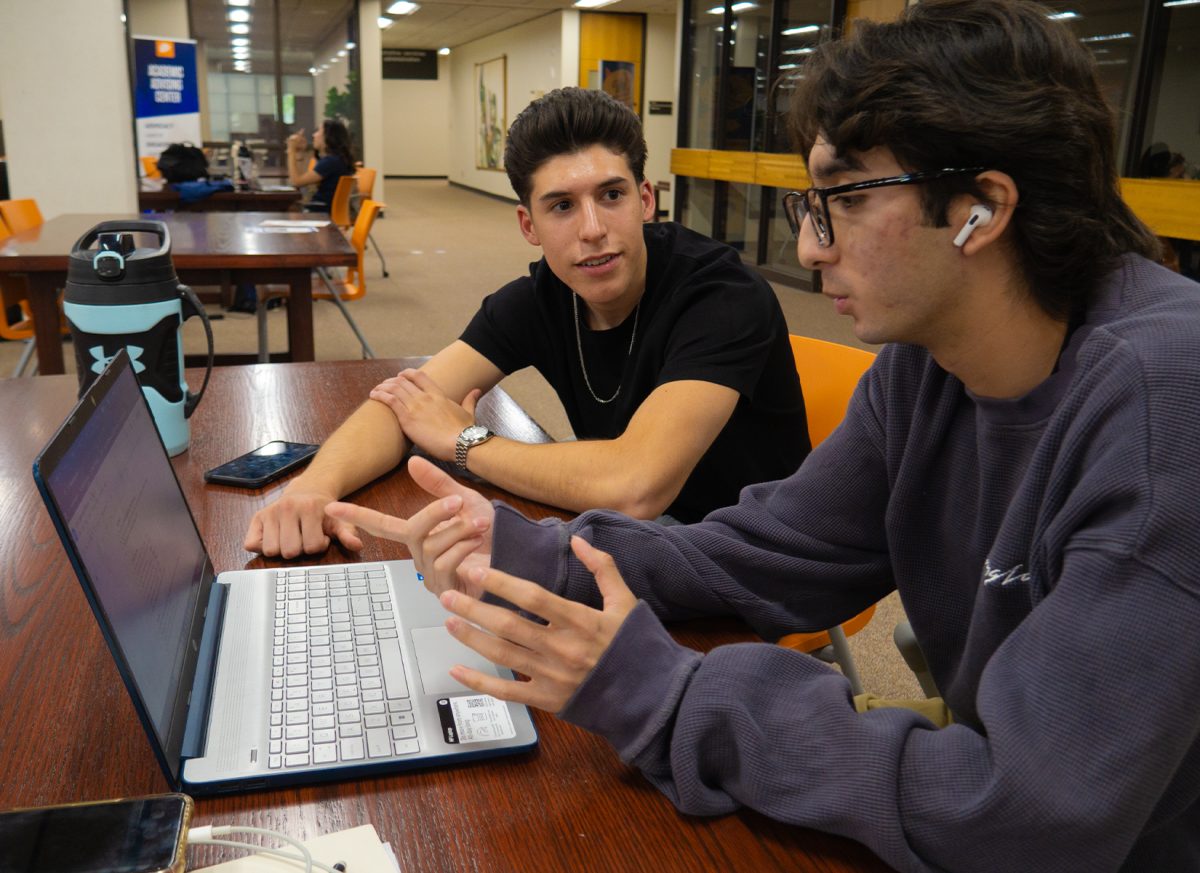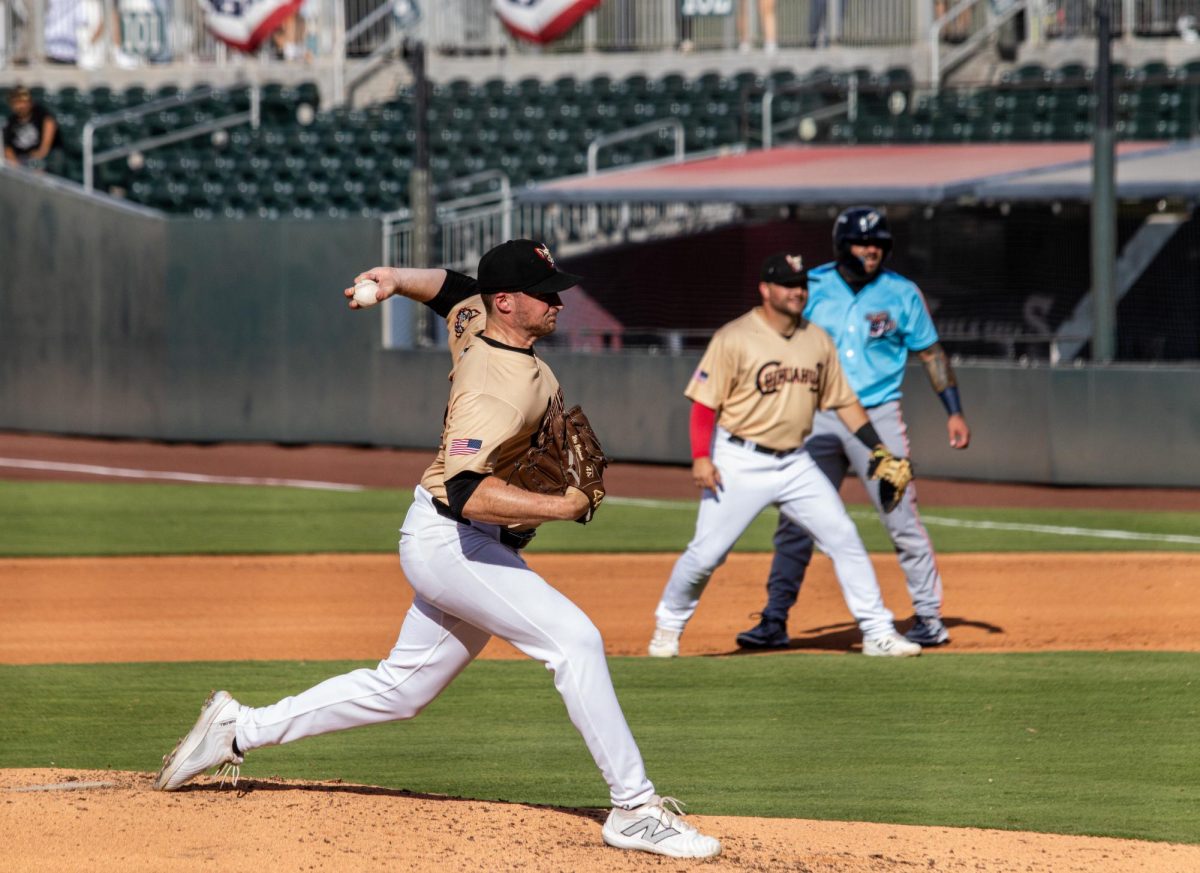Sir Fraser Stoddart, Nobel laureate and professor of chemistry at Northwestern University, visited UTEP on Thursday afternoon to give a lecture as part of the Centennial Lecture Series.
Stoddart spoke on his research, accomplishments, and how to be successful.
Stoddart’s lecture, “My Journey to Stockholm,” chronicled his life from his birth in Edinburgh, Scotland, to his current position as Board of Trustees Professor in Chemistry at Northwestern University.
Stoddart spoke on his contributions to the development of mechanically-interlocked molecular architectures, such as rotaxanes and catenanes. Stoddart has focused on the use of mechanically interlocked molecular architectures to create nanomechanical systems.
He demonstrated that such devices can be fabricated using a combination of the bottom-up approach of molecular self-assembly and a top-down approach of lithography and microfabrication.
Stoddart stressed the importance of “[being] able to appreciate the significance of a discovery.”
“Recognize the progress in research will be slow, in my case, it took 50 years,” said Stoddart.
In 1967, Stoddart went to Queen’s University in Canada as a National Research Council Postdoctoral Fellow, then, in 1970, to the University of Sheffield as an Imperial Chemical Industries Research Fellow, before joining the academic staff as a Lecturer in Chemistry.
After spending a sabbatical at the Imperial Chemical Industries Corporate Laboratory in Runcorn, England from 1978 to 1981, he returned to Sheffield where he was promoted in 1982.
He was awarded a Doctor of Science degree from the University of Edinburgh in 1980 for his research into stereochemistry beyond the molecule.
In 1990, he moved to the chair of organic chemistry at the University of Birmingham and was head of the school of chemistry there from 1993 to 1997 before moving to UCLA as the Saul Winstein professor of chemistry in 1997, succeeding Nobel laureate Donald Cram.
In July 2002, he became the acting co-director of the California NanoSystems Institute (CNSI). In May 2003, he became the Fred Kavli Chair of NanoSystems Sciences and served from then through August 2007 as the director of the CNSI.
For 35 years, nearly 300 Ph.D students and postdoctoral researchers have been trained in Stoddart’s laboratories, most have been students from around the world.
“Diversity pays off big time,” said Stoddart while showing a graph of the various nationalities that work in his field. “I want to make the emphasis that science is global, everything is global.”
In addition to his research, Stoddart also spoke about his late wife, who he lost in 2004,”[She was] the love of my life and my greatest critic,” said Stoddart after a few anecdotes detailing their relationship.
After being asked about humans’ struggling-effort to modify molecules in nature, Stoddart was optimistic about his work’s contribution to such ventures. He gave a few examples on how, as a species, humans can accomplish extraordinary breakthroughs.
“[As a society] if we can overcome the challenges of nature, then we can achieve anything we set our minds to,” said Stoddart, comparing the success of the Wright Brothers’ aviation inventions to what is possible in the future using nanomolecular machines.
Following his lecture, students were allowed to ask Stoddart questions. Despite the chemistry-heavy lecture, students of engineering, philosophy, and biology showed up to see Stoddart’s work connects with their respective fields.
After speaking about his research, Stoddart gave his audience—a room full of academics—advice on how to be successful in academia, as well as general life advice.
For professors in particular, Stoddart tells them to, “let students take ownership of their research, and then, they will be better because they love it. Put your students before yourself [and] support your students through thick and thin.”
To be successful in life, Stoddart said, “Treat people how you would expect to be treated yourself, [and] be respectful to people younger than yourself.”









